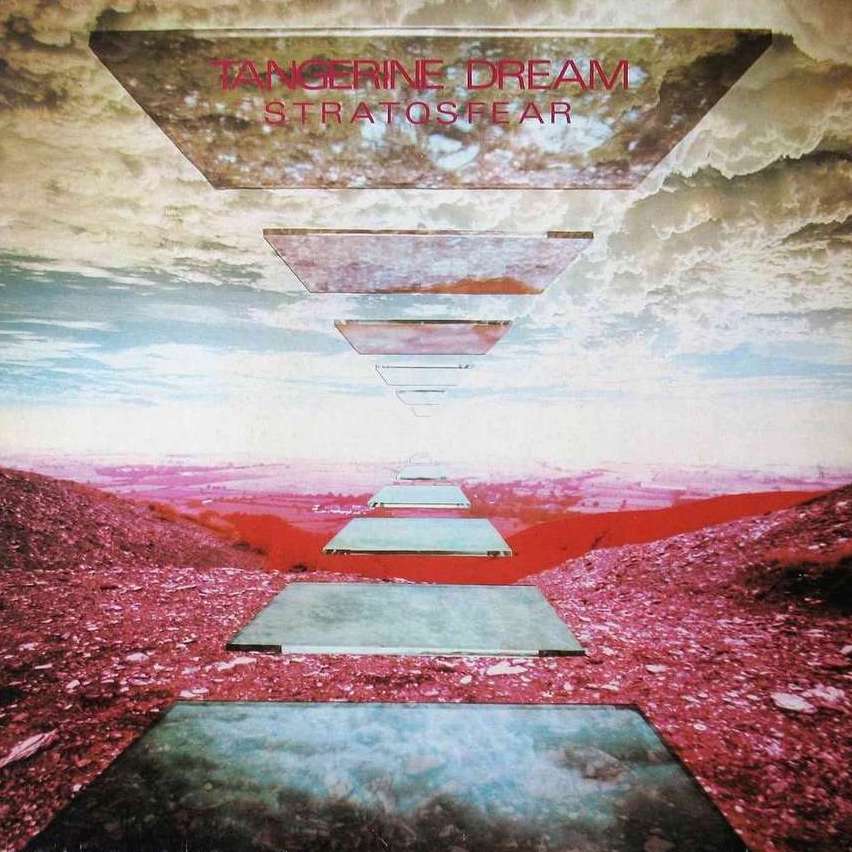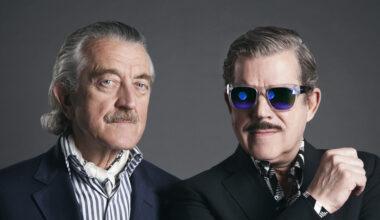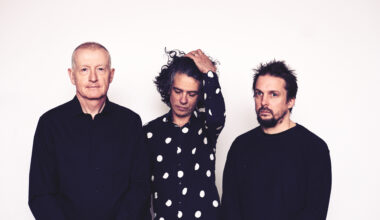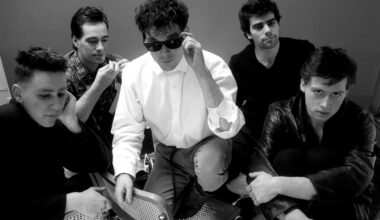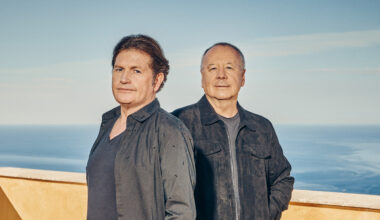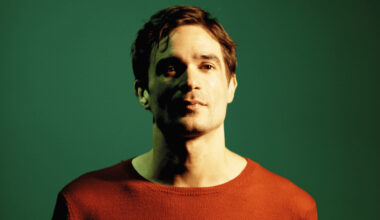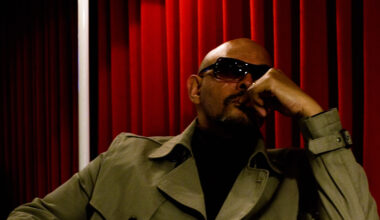It’s been a long and often very strange trip, that’s for sure. So just in case they come up in your local pub quiz, here’s A handy history of Tangerine Dream
Tangerine Dream founder Edgar Willmar Froese is born on 6 June 1944 (D-Day) in the East Prussian town of Tilsit (now Sovetsk in Russia). His father is killed by the Nazis in the final months of the Second World War and his mother flees to Berlin with the infant Edgar, settling in the western sector of the post-war divided city.
Froese shows an early interest in music, taking piano lessons from the age of 12 and switching his attention to the guitar three years later. He’s also a promising artist, enrolling into the Academy of Arts in West Berlin when he’s 18 to study both painting and sculpture.
Froese joins his first serious band, psychedelic popsters The Ones, in 1965. The Ones support Jimi Hendrix in Berlin and even play for Salvador Dalí at the surrealist artist’s villa in Spain. The group’s only release is a single called ‘Lady Greengrass’ on Star Club Records.
“Music for hippies,” proclaims the sleeve. The song’s lyrics include the line “The grass is tangerine”.
Increasingly interested in avant-garde music, Edgar Froese puts together the first version of Tangerine Dream in 1967. A few months later, Conrad Schnitzler and Hans-Joachim Roedelius invite the group to perform at the opening night of their Zodiak Free Arts Lab, a club beneath a theatre in the Kreuzberg district of West Berlin. Froese promotes the gig with a flyer featuring a picture of a topless woman and the words “Tonight – Tangerine Dream Music From A Different Universe”.
Tangerine Dream become the house band at the Zodiak, performing pretty much every weekend during the second half of 1968, their improvised sets lasting up to six hours. Froese plays guitar and organ, as well as various primitive electronic devices he has built himself. The other members of the group change on an almost monthly basis.
Froese recruits drummer Klaus Schulze in 1969 and the pair are joined by Conrad Schnitzler for a spontaneous recording session at a disused factory towards the end of the year.
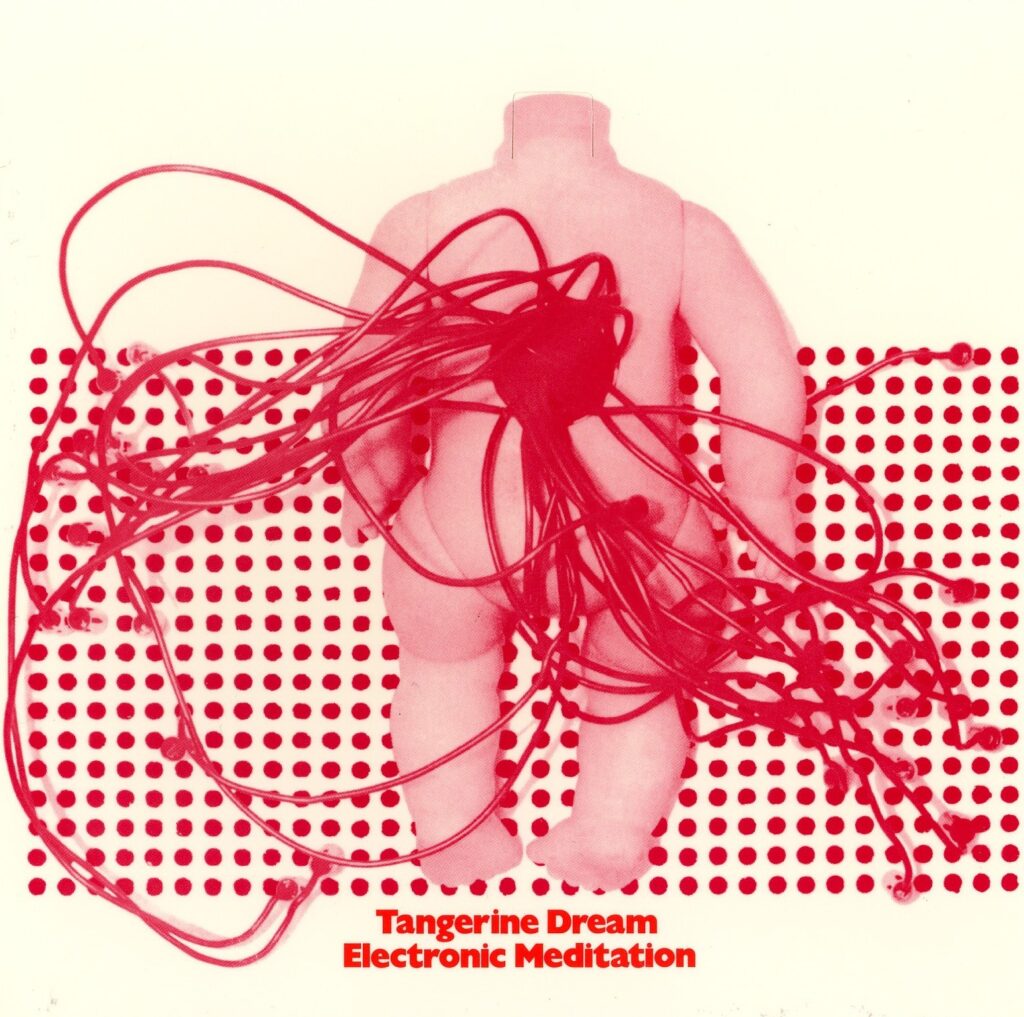
Schnitzler brings along a single-stringed cello, an old typewriter, a potato grater and several children’s rattles. The recordings also incorporate tape loops, tone generators and echo machines. Every sound is piled high with effects. Five tracks from the session are released in 1970 as ‘Electronic Meditation’, Tangerine Dream’s debut album. “Sick rubbish,” declares one reviewer. “Crush it and forget it,” says another. ‘Electronic Meditation’ is issued by Ohr Records, one of the most important early krautrock imprints, who release three more Tangerine Dream albums over the next three years. TD fans often call this period of the band’s history “The Pink Years” because the centre label on Ohr’s vinyl records is a pink ear (”ohr” being German for “ear”).
Schulze quits Tangerine Dream to form Ash Ra Tempel with Manuel Göttsching and is replaced by 17-year-old jazz drummer Christopher Franke for the second TD album, ‘Alpha Centauri’ (1971). Franke’s interest in synthesisers is an important first step in the band’s sound developing from experimental space rock jams to electronic soundscapes over the course of their first few albums. The addition of fellow teenage synth freak Peter Baumann for ‘Zeit’ (1972) completes TD’s classic 1970s line-up, the trio of Froese, Franke and Baumann staying together until 1977.
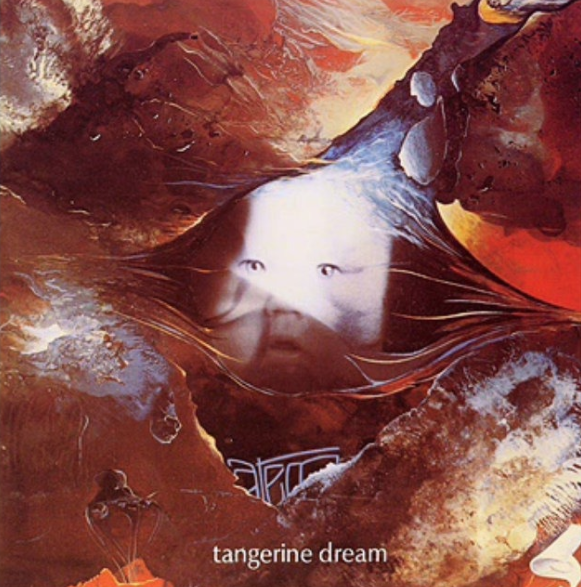
‘Zeit’ is followed by ‘Atem’, Tangerine Dream’s fourth album and their most accessible to date. Froese’s newly acquired Mellotron takes a lead role, while Franke and Baumann both play the VCS3. ‘Atem’ is also TD’s final release on Ohr. In the UK, Radio One DJ John Peel says it’s his favourite album of 1973 and his support brings the band to the attention of Richard Branson and Simon Draper, who are about to launch Virgin Records with Mike Oldfield’s ‘Tubular Bells’. Froese flies to London and signs a deal with Virgin after playing chess with Branson on his houseboat. TD use a chunk of their advance to buy a big Moog Modular synthesiser.
Tangerine Dream’s first album for Virgin is ‘Phaedra’. It’s also their first fully electronic offering. The album is recorded at Branson’s Manor Studio in Oxfordshire and released in 1974. Despite a host of technical challenges during the recording, not least having to spend several hours tuning the Moog every day, ‘Phaedra’ is a phenomenal work, especially the epic title track, and wins instant critical approval. Almost 45 years on, it’s still widely recognised as one of the all-time greatest electronic music albums.
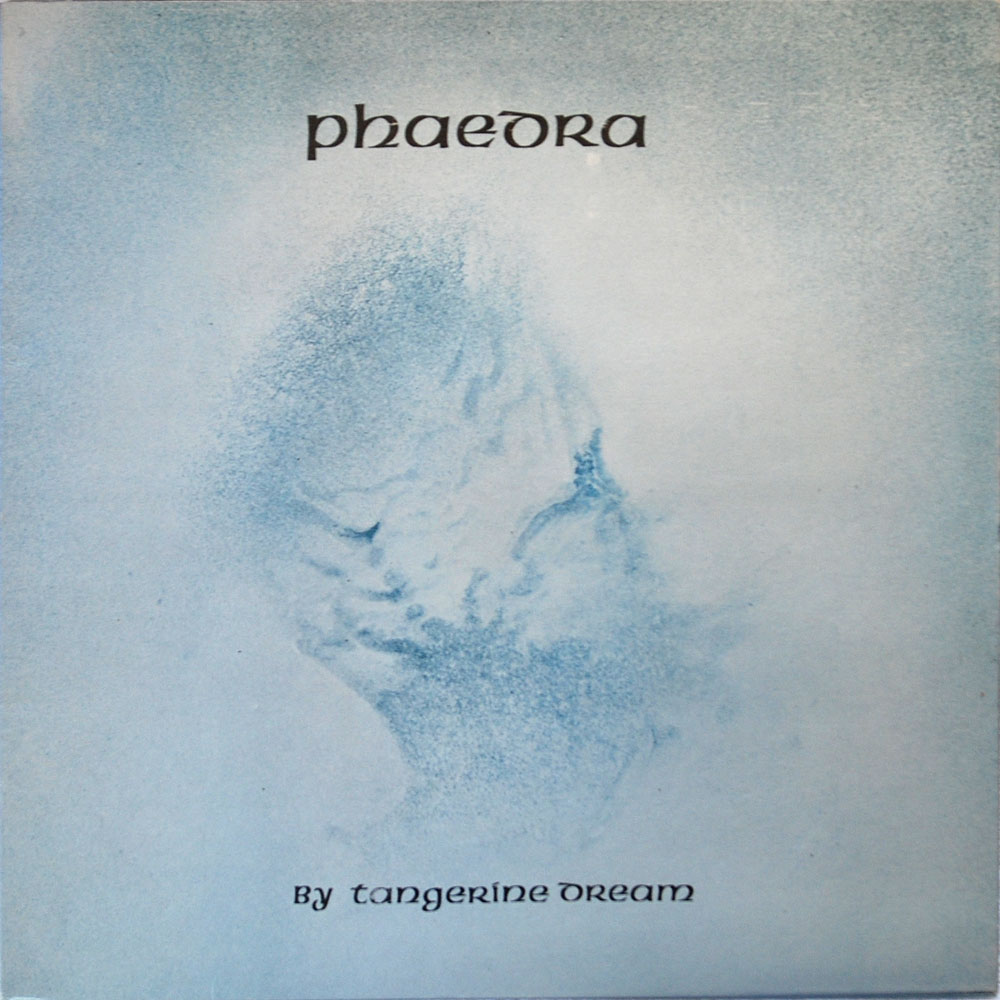
The band close 1974 with a 20-date tour of the UK, followed by a one-off show at Reims Cathedral in France. Over the next couple of years, TD undertake two further UK tours, including gigs at Coventry Cathedral and York Minster, as well as tours of Europe, Australia and America. Their 1977 New York show is reviewed for Village Voice by the legendary music critic Lester Bangs under the title “I Saw God And/Or Tangerine Dream”. Despite the ambient passages of some of their pieces, their live shows have a reputation for being very loud, with another reviewer describing them as “turning on the heavy metal”.
Phaedra’ is followed by two more excellent and widely acclaimed studio albums, ‘Rubycon’ (1975) and ‘Stratosfear’ (1976). ‘Rubycon’ is very much a companion piece to ‘Phaedra’ in terms of electronic instrumentation, while ‘Stratosfear’ reintroduces more acoustic sounds. Separating these two releases, the group also release a live album, ‘Ricochet’, and Edgar Froese records his first solo works, most notably the largely ambient and totally brilliant ‘Epilson In Malaysian Pale’ (1975).
A new creative channel opens up for Tangerine Dream in 1977 with their first film soundtrack, ‘Sorcerer’. The film is directed by William Friedkin, best known for ‘The Exorcist’ and ‘The French Connection’. The album is also notable for being Peter Baumann’s last studio work with the band. He later launches Private Music, a record label specialising in ambient music. TD subsequently release five albums on Private Music between 1988 and 1991.
Froese and Franke record the next couple of TD albums with the help of drummer Klaus Krüger, who is an old friend of Froese. ‘Force Majeure’ (1979) picks up where ‘Stratosfear’ leaves off and quickly becomes a favourite among hardcore fans, particularly ‘Cloudburst Flight’, a track that layers some seriously wild guitar over warm synth pulses. The result is melodic, hypnotic and intensely powerful.
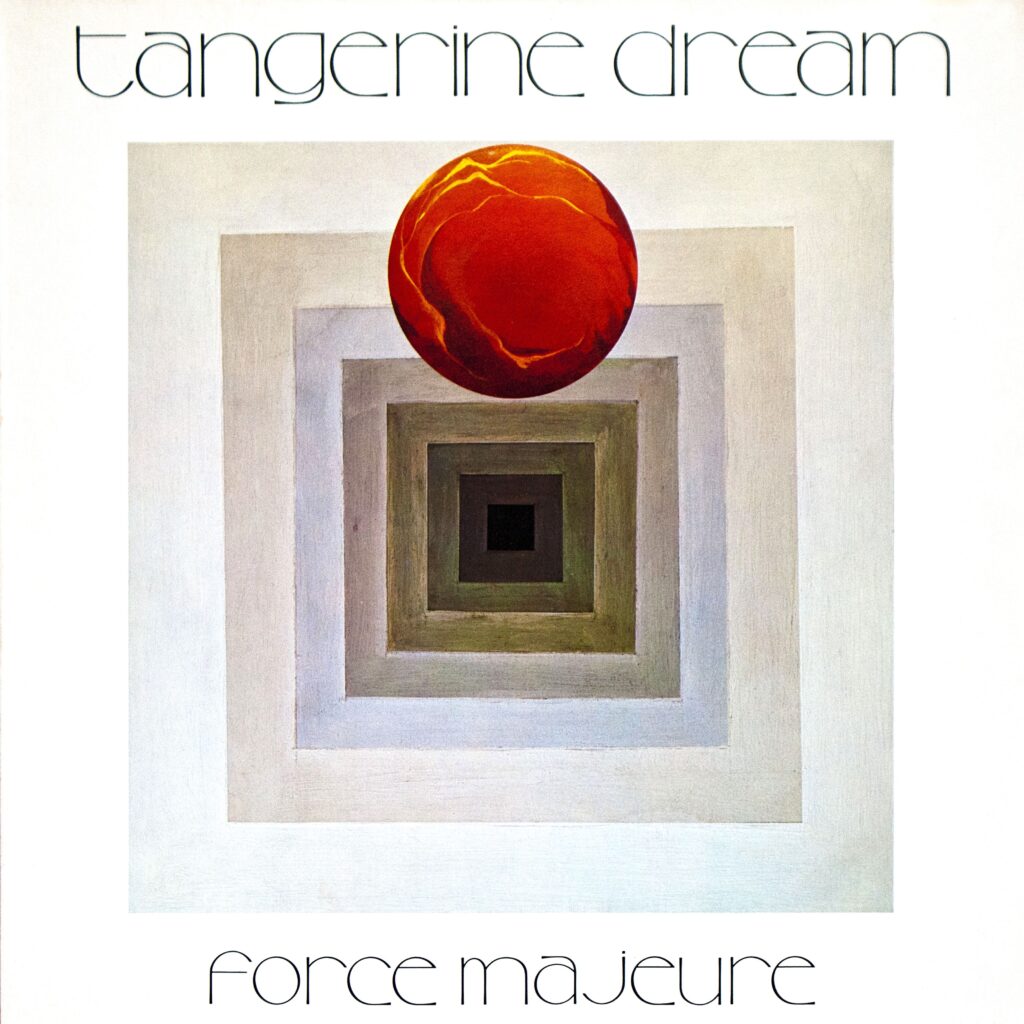
Tangerine Dream become the first western band to play live in East Berlin when they perform two shows at the Palast Der Republik, the seat of the East German parliament, in January 1980. It’s an unforgettable live debut for new TD member Johannes Schmoelling, a former engineer at Hansa Studios who has only been with the group for a few weeks. A lengthy improvisation piece is released as ‘Quichotte’ by the state-owned East German label Amiga later in the year and is reissued by Virgin in 1986 under the title ‘Pergamon’.
As the 1980s unfurl, TD continue to make some very fine albums, including ‘Tangram’ (1980), ‘Exit’ (1981) and ‘Underwater Sunlight’ (1986). The latter sees Schmoelling replaced by Austrian keyboardist Paul Haslinger, who stays with the group for five years. TD craft no less than 20 film soundtracks in the 1980s, including ‘Thief’, ‘Firestarter’, ‘Legend’ and ‘Risky Business’. The latter, which includes reworked material from ‘Force Majeure’, brings to an end the group’s 10-year affiliation with Virgin Records.
As a result of their East Berlin gig, TD become one of the most popular western groups behind the Iron Curtain. They perform more live shows in East Germany in 1982, as well as playing in Poland, Hungary and Yugoslavia over the next couple of years. The highlights of their two sets at the Ice Stadium in Warsaw at the end of 1983 are released as a double album called ‘Poland’, a record that also marks the start of a four-year period signed to the Jive Electro label.
Christopher Franke leaves Tangerine Dream in 1987, after a gig to celebrate the 750th anniversary of Berlin. He has been a member of the group for half of his life by this point. Franke later founds the Berlin Symphonic Film Orchestra and composes music for film and television, most notably for all five seasons of ‘Babylon 5’, the 1990s US TV sci-fi series.
Edgar Froese’s son Jerome joins Tangerine Dream for ‘Melrose’ (1990), which is also Paul Haslinger’s last album with the band.
Jerome has been playing guitar since he was 12 years old, but his association with TD began as a baby, when he appeared on the cover of ‘Atem’ in 1973. Austrian composer Linda Spa joins the group around the same time as Jerome. She leaves in 1996, but returns in 2005 for a second lengthy stint.
The band’s output seems to gather pace throughout the 1990s and into the new millennium, with lots of compilations and live albums as well, as new studio sets and soundtracks. There are no less than 26 TD releases in 2007, for example, an average of one every fortnight. From 1995, much of their material appears on their own TDI Music label, which Froese later rebrands Eastgate Records, Eastgate also being the name of his recording studio in Vienna.
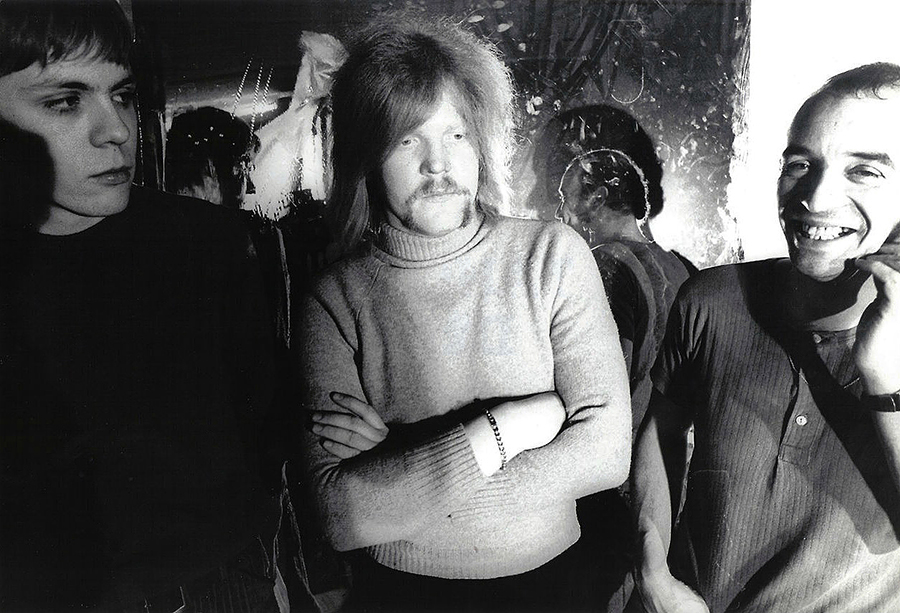
Jerome Froese leaves Tangerine Dream in 2005. After a number of solo releases, he hooks up with Johannes Schmoelling to form Loom, who have released three albums since 2011. Jerome Froese’s replacement in TD is multi-instrumentalist composer Thorsten Quaeschning, who makes his recording debut with the band on ‘Jeanne D’Arc’, TD’s first proper studio album since ‘Mars Polis’ in 1999.
‘Remote Viewing’, the closing track of ‘Exit’, is included in the 2008 video game ‘Grand Theft Auto IV’. It’s one of the tracks played on the in-game radio station The Journey, which also features material from Jean-Michel Jarre, Philip Glass and Aphex Twin.
Japanese violinist Hoshiko Yamane is added to the Tangerine Dream line-up in 2011. Ulrich Schnauss, a hugely respected electronic artists in his own right for almost 20 years, joins in 2014. Having worked with a large pool of musicians since 2005, Froese hones TD down to a core team of himself, Quaeschning, Schnauss and Yamane.
Edgar Froese and Peter Baumann meet at the beginning of January 2015 to discuss working together again for the first time since 1977. The pair have remained good friends throughout the many years that have passed since Baumann left Tangerine Dream and they’re both excited about the possibility of a new collaboration. They agree to sketch out some ideas and meet again in a few weeks.
Edgar Froese dies suddenly in Vienna on 20 January 2015 as a result of a pulmonary embolism. He is 70 years old. Many of the obituaries quote Froese as having once said, “There is no death, there is just a change of our cosmic address”.
The remaining members of Tangerine Dream – Thorsten Quaeschning, Ulrich Schnauss and Hoshiko Yamane – decide to continue the group without Edgar Froese, albeit perhaps for just a while. They perform together as TD at an special evening dedicated to Froese in Berlin in January 2016 and then play their first full live show as a trio in Poland six months later.
Around the same time as TD’s Poland gig, Peter Baumann releases ‘Machines Of Desire’ on the Bureau B label, his first solo album for 33 years.
Three Tangerine Dream tracks are used in the first series of the cult Netflix TV show ‘Stranger Things’, most notably the title cut of ‘Exit’. The composers of the original music for the show, Kyle Dixon and Michael Stein from SURVIVE, cite TD as one of their biggest influences. TD themselves have since recorded their own version of Dixon and Stein’s ‘Stranger Things’ opening theme.
‘Quantum Gate’ is the most recent Tangerine Dream studio album. Released on Eastgate in late 2017, the tracks are based on musical sketches made by Edgar Froese. Including their numerous reworkings, soundtracks and live sets, it’s the band’s 150th album. Give or take two or three, anyway.
